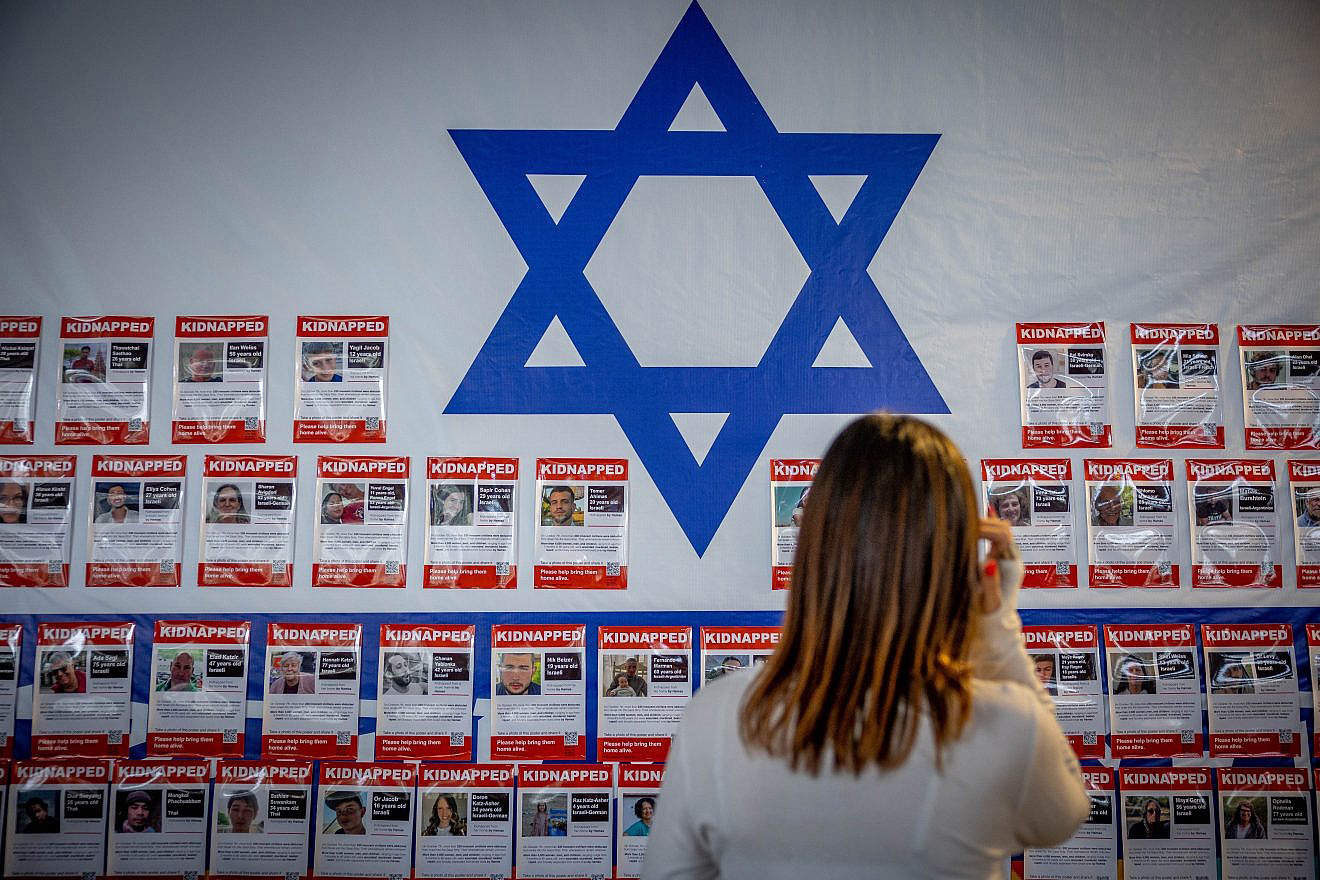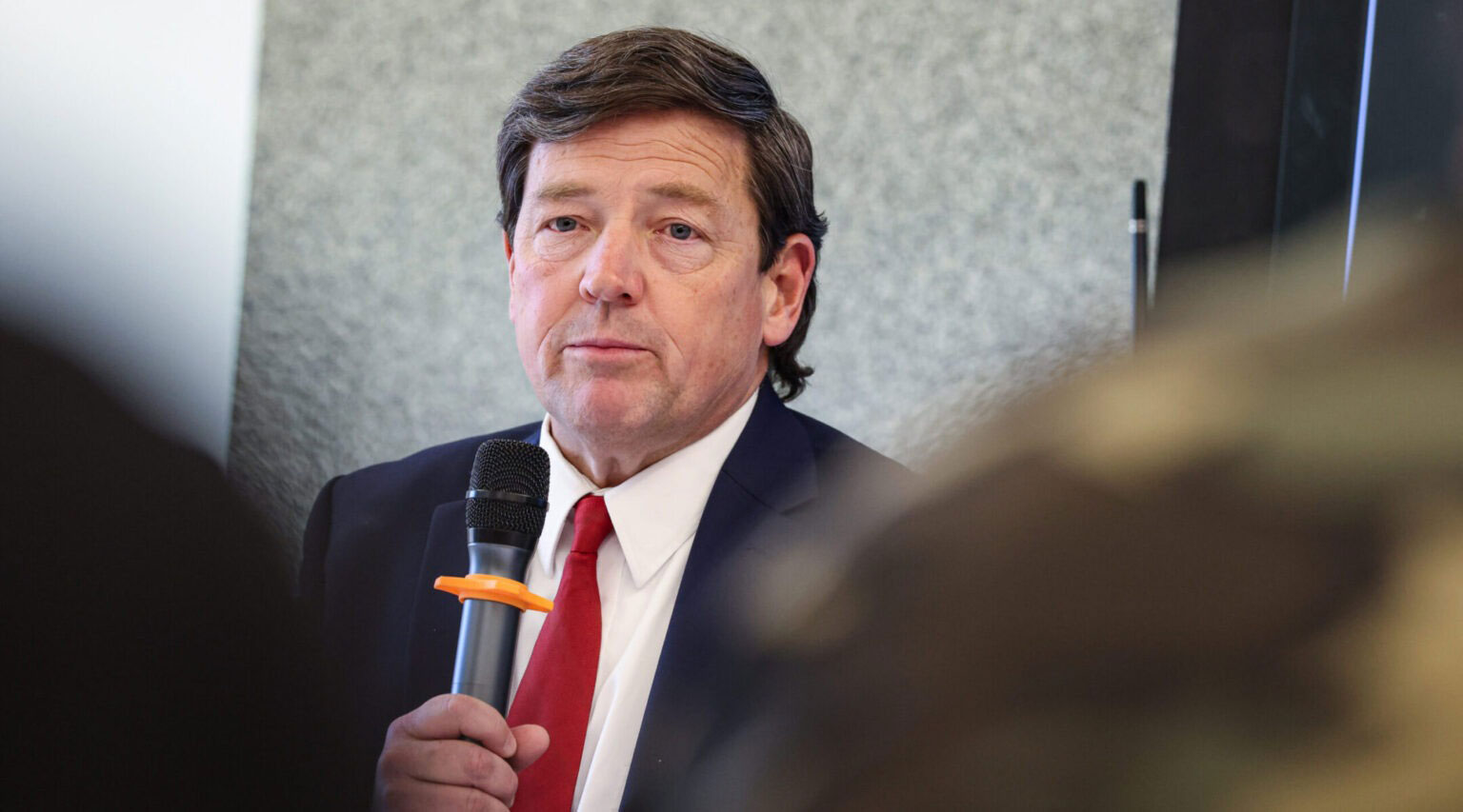Courtesy of JNS. Photo credit: Yonatan Sindel/Flash90
Pictures of civilians held hostage by Hamas terrorists in the Gaza Strip, in Jerusalem, Nov. 22, 2023
(JNS) — The Hamas terror group has agreed to a hostages-for-ceasefire framework and mediators are negotiating the details and implementation, The Washington Post reported on Wednesday night.
The Post’s David Ignatius said that though the framework is in place, officials warned that a final agreement is unlikely to be imminent as the details of the deal are complex and will take time to work through.
One U.S. official suggested that Hamas’s acquiescence to the terms was at least in part prompted by the fact that the terror group is in “rough shape” and low on ammunition as a result of Israeli military pressure.
Ignatius said that, as part of the truce, the parties have indicated their approval of an interim governance plan in which neither Israel nor Hamas would rule Gaza. Instead, security would be provided by a U.S.-trained force backed by moderate Arab nations, drawn from a group of 2,500 vetted Palestinian Authority supporters who are already in Gaza.
Hamas told mediators that it was “prepared to relinquish authority to the interim governance arrangement” during the second phase of the agreement, which comes after the initial six-week truce, an official said.
During a Wednesday meeting in Jerusalem, Prime Minister Benjamin Netanyahu told U.S. National Security Council Coordinator for the Middle East and North Africa Brett McGurk that the Jewish state remains committed to a deal as long as it adheres to his red lines.
The premier’s stated red lines include the ability to resume fighting in Gaza until all war goals have been met; an end to arms smuggling from Egypt; no return of “thousands” of Hamas terrorists to the enclave’s north; and maximizing the number of living hostages released.
Netanyahu’s tête-à-tête with the Biden administration official came as an Israeli delegation led by Mossad Director David Barnea touched down in Doha to continue hostage release and ceasefire negotiations.
CIA Director William Burns, Egyptian intelligence chief Maj. Gen. Abbas Kamel and Qatari Prime Minister Mohammed bin Abdulrahman Al Thani were also said to have participated in the discussions in Qatar.
Mediators are working to revive the ceasefire outline President Joe Biden presented on May 31, which calls in its first stage for a “full and complete” six-week truce during which dozens of hostages — women, the elderly and the sick — would be exchanged for hundreds of terrorists.
Meanwhile, Jerusalem and Hamas would negotiate the terms of the second phase, in which the remaining male hostages would be freed in return for Israel releasing additional Palestinian terrorists from jail.
In the third phase, the corpses of Israeli civilians and soldiers would be returned for burial, and the reconstruction of the Strip would start.
Of the 120 hostages remaining in the Strip, 116 were abducted during the Hamas-led Oct. 7 massacre (the other four were captured earlier). The figure includes both living and deceased men, women and children.
The White House is “cautiously optimistic” about the prospects of Hamas greenlighting the deal with Israel, U.S. National Security Council spokesperson John Kirby said in an interview earlier on Wednesday.
“There are still gaps remaining between the two sides. We believe those gaps can be narrowed, and that’s what Brett McGurk and CIA Director Bill Burns are trying to do right now,” Kirby told CNN’s Wolf Blitzer.
“If we get this ceasefire deal in place, and we’ve got negotiators in Cairo right now talking about this, it would give us six weeks of calm in phase one, which would allow for much more freedom of movement of that humanitarian assistance inside Gaza,” said Kirby.





